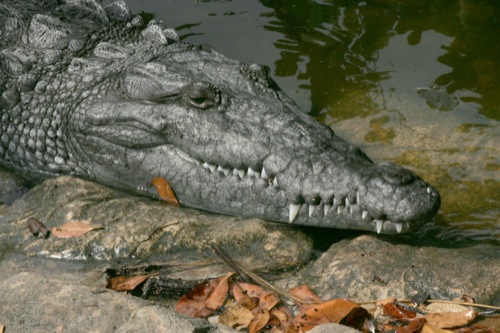
Courtesy NPS
Everglades National Park
Homestead, Florida
Beneath Florida’s open sawgrass marsh lurk more than 50 kinds of reptiles, including snakes, alligators and the enormous American crocodile. You could see many of these remarkable creatures on a tour of the Everglades National Park, the largest designated wilderness east of the Mississippi River.
“The park is actually a large moving freshwater system,” said Samantha Paige, interpretation receptionist for the park. “We have many tours going through our 1,000 Islands area and inlet waterways.”
Called the River of Grass, the Everglades protects not only wetland reptiles, but also one of the largest breeding grounds for tropical wading birds in North America. Groups touring the park can see anhingas, bald eagles, ospreys, snowy egrets and white ibis.
To tour this labyrinth of water, grass and mangroves, guests can choose from a number of experiences, such as hiking, canoeing or airboat tours. The airboat experiences help groups cover plenty of ground quickly to make it more likely to spot an alligator poking his head out of the water, a turtle sunning on a tree root or other exotic animals such as the wood stork.
Boat rides also increase groups’ chances of seeing a dolphin or a manatee swimming in the freshwater, which is always a highlight.
www.nps.gov/ever
Witless Bay
Ecological Reserve
Witless Bay, Newfoundland and Labrador
Although they look like miniature penguins, puffins have one talent penguins don’t: They can fly. These adorable coastal birds can be admired up close on a boat tour of the Witless Bay Ecological Reserve, just a half-hour south of St. John’s, Newfoundland.
The reserve contains North America’s largest Atlantic puffin colony, with more than 260,000 pairs of the province’s official bird nesting there during peak season of late spring and summer. Visitors can easily spot the black-and-white seabird from its colorful bill and its distinctive grunting call.
Boat tours take groups out to the reserve’s four islands to watch the not-so-graceful puffins awkwardly fly into the air and to see some of the area’s other birdlife, including Leach’s storm-petrels, black-legged kittiwakes and common murres.
During the ride, guests watch both the colorful, steep cliffs for birds and the sea for possible humpback whales and icebergs. About 80 icebergs a year drift down on the Labrador Current past Witless Bay. Guides will help groups identify whales and icebergs and which seabirds are flying by.
Not far from the reserve lies Cape Spear Lighthouse National Historic Site. Known as the most easterly point in North America, the park boasts rust-colored cliffs and two scenic lighthouses.
Yosemite National Park
Yosemite, California
When gazing up at the vertical granite monolith called El Capitan, onlookers can sometimes spy climbers making their way up the 3,000-foot-high cliff with the help of binoculars. Once they glimpse the tiny dot that is a full-grown person, the immensity of the scenery becomes even more profound.
Yosemite National Park boasts postcard views such as this all over its 1,200 square miles. Thundering waterfalls, lush meadows, giant sequoias and fascinating rock formations make the park a wonder to behold.
“Yosemite has so much more to offer than traditional metropolitan activities,” said Kenny Karst, manager of group services and catering for DNC Parks and Resorts at Yosemite, Inc. “What we offer to groups is to be revitalized by experiencing nature firsthand. It’s very invigorating to come to Yosemite.”
Groups can experience the park in numerous ways, including climbing, rafting, horseback riding and guided hikes. The park also offers numerous sightseeing tours that range from two hours to an entire day of Yosemite’s highlights.
From the floor of Yosemite Valley, visitors can look up at the falling waterfalls and high sierra mountains. The opposite view can be found an hour’s drive from the valley at Glacier Point. At this overlook, Half Dome, El Capitan and the entire Yosemite Valley lie spread out in one unforgettable vista.
After soaking in the High Sierra landscapes, the Mariposa Grove of Giant Sequoias also warrants a stop. Several hundred mature sequoias have lived there for centuries, among them the Grizzly Giant tree that is about 2,000 years old. Just one of this ancient tree’s branches is 12 feet in diameter.









